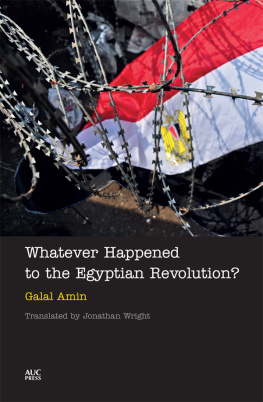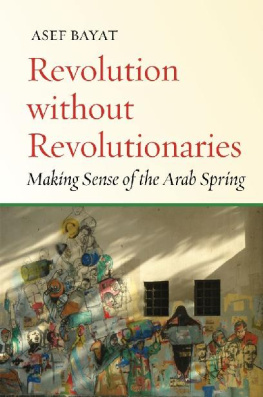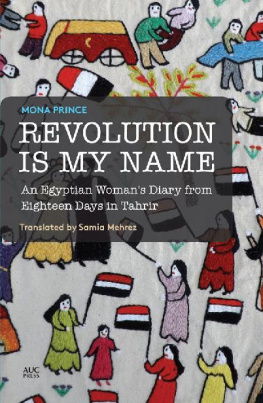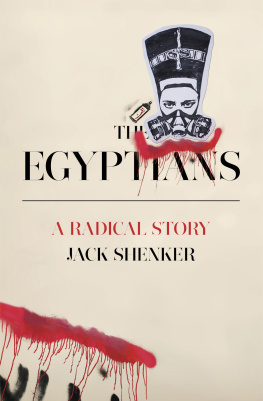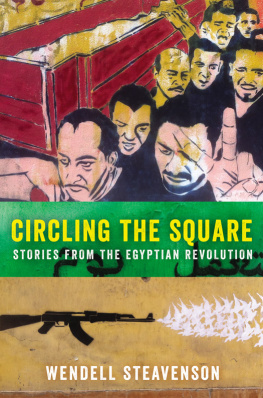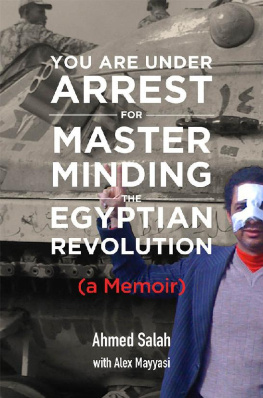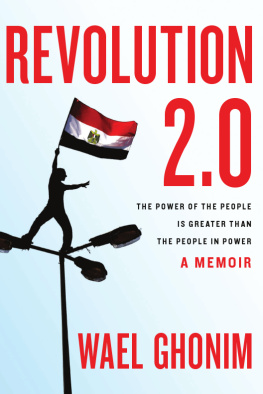Thank you for downloading this Simon & Schuster eBook.
Join our mailing list and get updates on new releases, deals, bonus content and other great books from Simon & Schuster.
C LICK H ERE T O S IGN U P
or visit us online to sign up at
eBookNews.SimonandSchuster.com
We hope you enjoyed reading this Simon & Schuster eBook.
Join our mailing list and get updates on new releases, deals, bonus content and other great books from Simon & Schuster.
C LICK H ERE T O S IGN U P
or visit us online to sign up at
eBookNews.SimonandSchuster.com
ALSO BY THANASSIS CAMBANIS
A Privilege to Die: Inside Hezbollahs Legions and Their Endless War Against Israel

Simon & Schuster
1230 Avenue of the Americas
New York, NY 10020
www.SimonandSchuster.com
Copyright 2015 by Thanassis Cambanis
All rights reserved, including the right to reproduce this book or portions thereof in any form whatsoever. For information, address Simon & Schuster Subsidiary Rights Department, 1230 Avenue of the Americas, New York, NY 10020.
First Simon & Schuster hardcover edition January 2015
SIMON & SCHUSTER and colophon are trademarks of Simon & Schuster, Inc.
The Simon & Schuster Speakers Bureau can bring authors to your live event. For more information or to book an event, contact the Simon & Schuster Speakers Bureau at 1-866-248-3049 or visit our website at www.simonspeakers.com.
Interior design by Erich Hobbing
Jacket design by Christopher Lin and Jonathan Bush
Front flap image Shutterstock
Library of Congress Cataloging-in-Publication Data
Cambanis, Thanassis.
Once upon a revolution : an Egyptian story / Thanassis Cambanis.
pages cm
Includes bibliographical references and index.
1. EgyptHistoryProtests, 2011 2. Kamel, Basem. 3. Abdelkareem, Moaz. 4. Political activistsEgyptBiography. 5. Civic leadersEgyptBiography. 6. RevolutionariesEgyptBiography. 7. EgyptHistory1981-Biography. 8. Social changeEgyptHistory21st century. I. Title.
DT107.88.C36 2015
962.05'5dc23
2014022751
ISBN 978-1-4516-5899-6
ISBN 978-1-4516-5901-6 (ebook)
For Anthony, whose love and enthusiasm inspired this project and imbues my every day;
And for Athina and Odysseas, perpetual revolutions of curiosity and joy.
But what about us? Or let me say what about you? You who reject the injustice of detention but remain free outside the prisons? What will you do? Will you share in the show? Or withdraw from it and wait silently to be taken from your homes? Will you abandon us? Will you be content to wait because this is a temporary situation?... Everyone knows that there is no hope for us who have gone ahead into prison except through you who will surely follow. So what are you going to do?
Alaa Abdel Fattah, Everybody Knows, Letter from Prison, March 2014
Remember the tomorrow that never came?
Keizer, Cairo street graffiti
Even though you can destroy a man, destroying him does not make him cease to exist. On the contrary, if I can put it this way, he begins to exist all the more. These are paradoxes no tyrant can deal with. The scythe swings, and at once the grass starts to grow back. Cut again, and the grass grows faster than ever.
Ryszard Kapuciski, Shah of Shahs
CONTENTS
1.

BREAKING THE WALL OF FEAR
Listen: I didnt mean to write a book about the Egyptian Revolution. When Tahrir Square first erupted, I had to go see it for myself, because Id been writing about hopelessness in the Arab world for most of my adult life, and January 25, 2011, was the first unequivocally hopeful thing Id seen. I meant to stay only a little while, but the people I met there were doing something that mattered not just for Egypt or the Arab world but for everyone. They werent merely trying to overthrow a despicable regime; they were trying to invent a new kind of democracy that would improve on the existing models around the world. They were ambitious idealists. They wanted to take the best of what they saw in democracy around the world and combine it into a system that was fairer, freer, and more efficient.
Egypts dictators had insisted that their subjects were incompetent, helpless sheep who needed a strong hand. Left on their own, theyd make a mess and starve to death. Egypts revolution began with eighteen utopian days in Tahrir. A group of people with no previous experience of self-rule created institutions to rule the square. It was nothing short of a new society in miniature. They collected garbage in a country where littering was endemic. They organized security patrols, a jail, food distribution, prayer spaces, entertainment. They even formed a government of sorts, the Revolutionary Youth Coalition, which drafted policy proposals and plotted a political strategy. These individuals had come of age impervious to societys effort to make them passive and helpless. I sought out the people in the square who were taking initiative, taking charge, spewing plans and ideas. They were the ones most responsible for the inspiring eighteen days in Tahrir, and I wanted to see how they would go about seeking change in the years to come. They knew that remaking Egypt was a long-term project with long odds.
I focused on a few dozen activists who gravitated to politics. They came from varied backgrounds and had different areas of expertise: street organizing, human rights, policy, party politics. I followed them as they endeavored to translate Tahrir Squares utopian society into a political system. In the years after Tahrir Square and the fall of President Hosni Mubarak, Egypt hosted a bloody struggle for power and between different ideas of government. The revolutionaries brought a lofty, idealistic tone to the contest, but they were joined and often bested by the established players: the army, the police, Mubaraks elite, and the Muslim Brotherhood, the secretive religious organization that had survived eight decades underground. Many revolutionaries show up in these pages, along with representatives of the establishment and other reactionary forces. I have chosen to place at the center of the story two men from different backgrounds who embodied the revolutions most important aspirations and persisted through setback after setback.
One is a schlumpy pharmacist named Moaz Abdelkarim, a career activist who grew up in the Muslim Brotherhood but whose propensity for joking and asking questions was incompatible with its authoritarian culture. When the revolution began, Moaz was twenty-six years old. He represented the revolutions id or soul, and its Islamist branch. Moaz was personally religious but passionate about pluralism and secular government. At all times, he lived by an injunction to do the right thing regardless of its personal cost. Moaz wore this morality without fanfare, and never set it aside. Like many revolutionaries, he also had trouble thinking beyond the present moment. If the right thing right now conflicted with the right thing for the long run, he always prioritized right now.
The other figure I have emphasized is an architect named Basem Kamel, who avoided politics until he turned forty the year before the uprising. Basem was as shrewd as Moaz was impulsive, as punctual as Moaz was perpetually tardy. Basem had built a business, raised a family, and stayed out of trouble. When finally he started to resist Egypts corrupt political system, he moved strategically. He had more at risk than those revolutionaries without families, but also more to gain. Basem never did anything without first considering the long-term consequences. Tahrir Square was a powerful symbol, but it wasnt the goal of the revolution; the goal was to bring effective representational democracy to Egypt. Protest was just one tactic to that end. Basem worked hard at politics, unflaggingly, even when no one was paying attention. He cared deeply for the revolution but wasnt carried away by emotion. He represented the revolutions ego or brain, and its secular branch.
Next page

